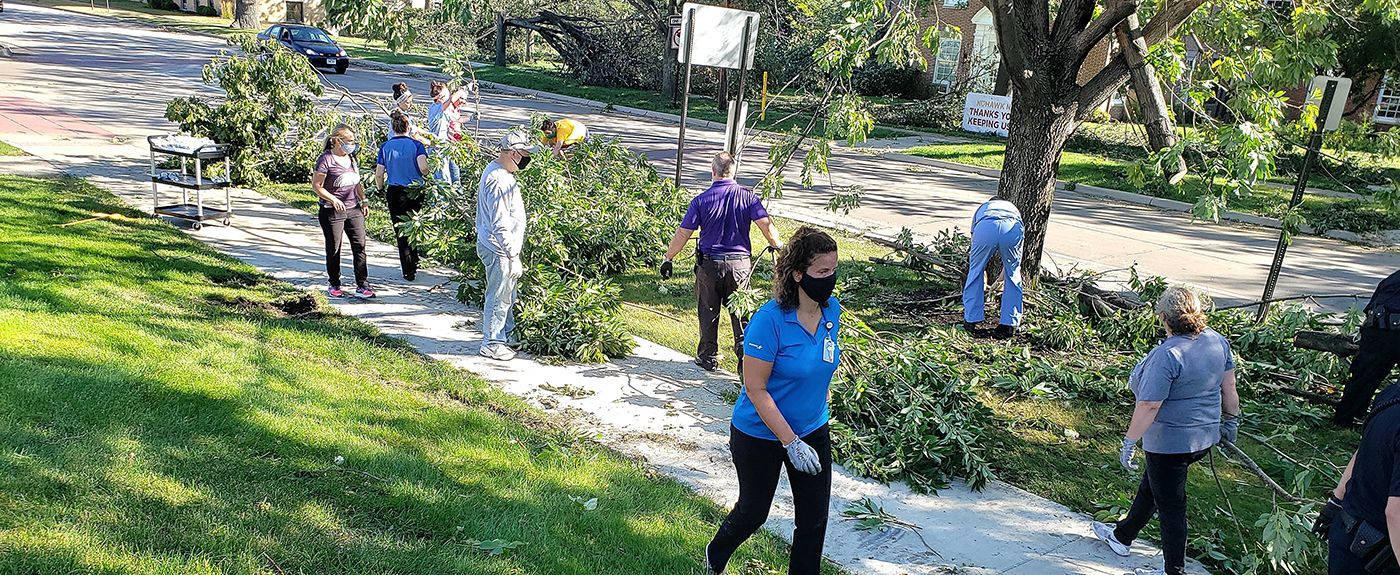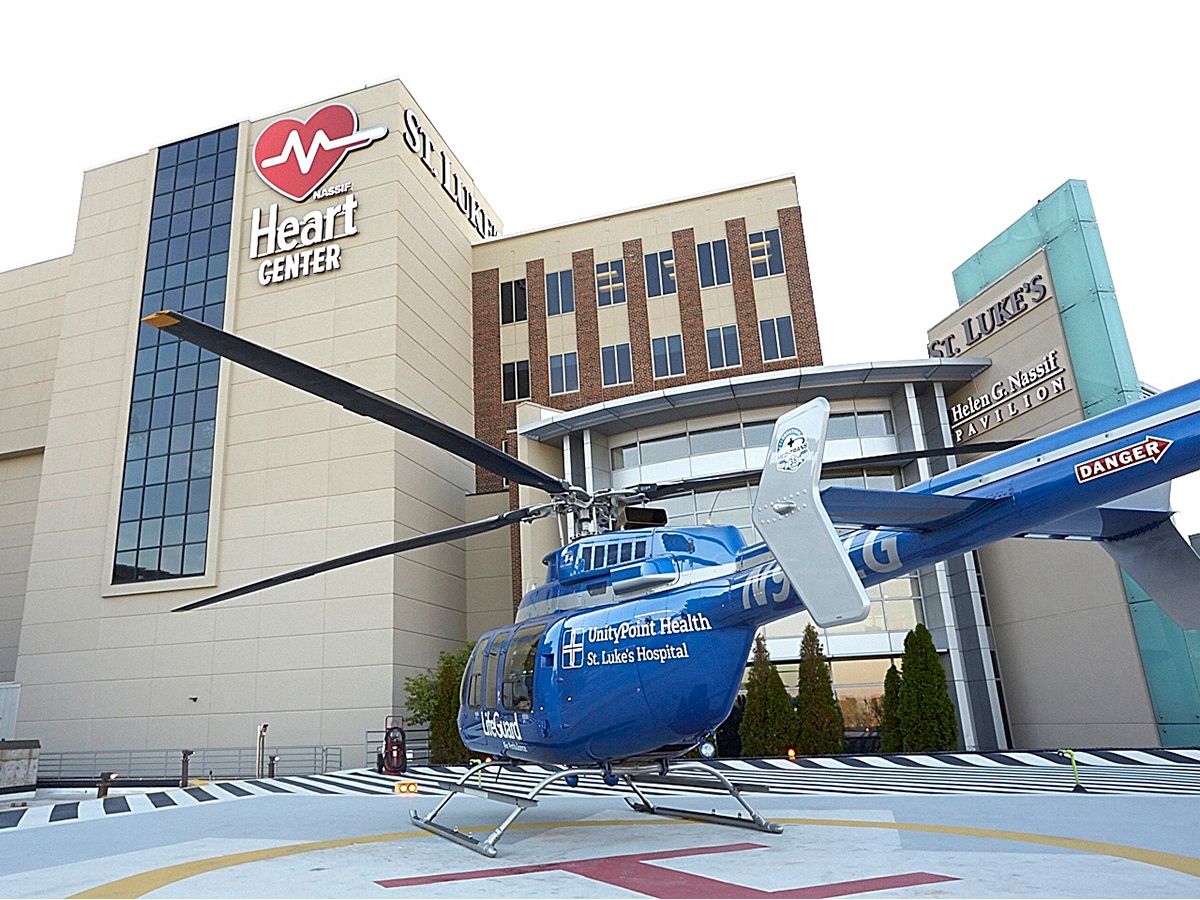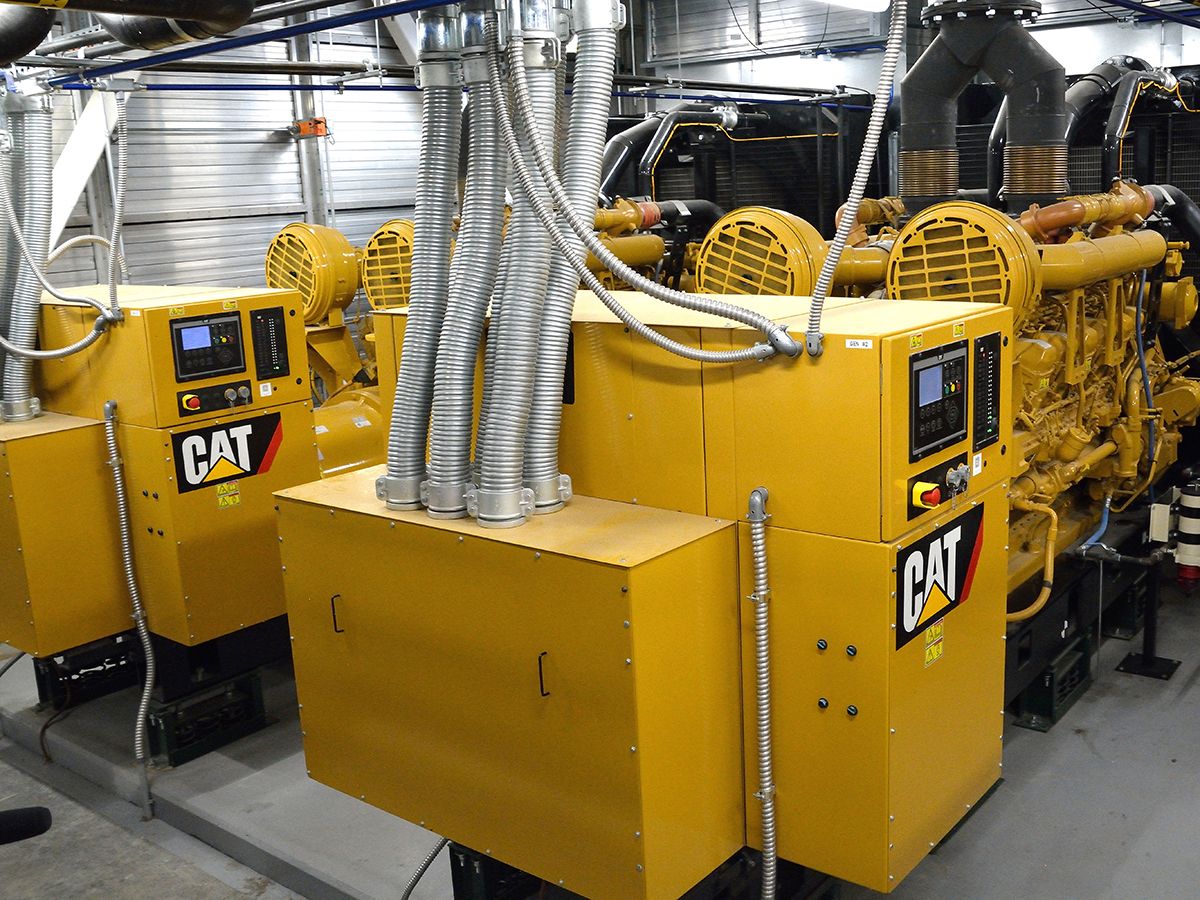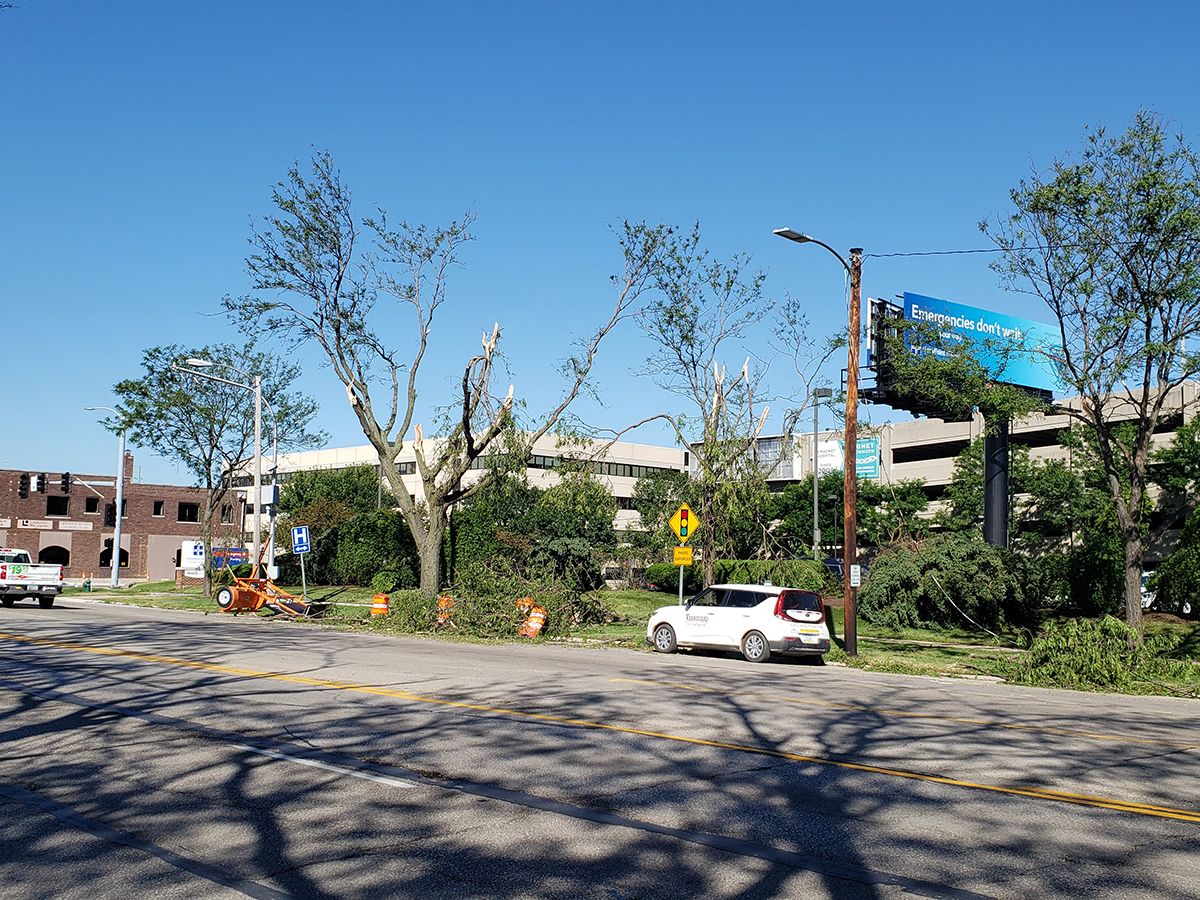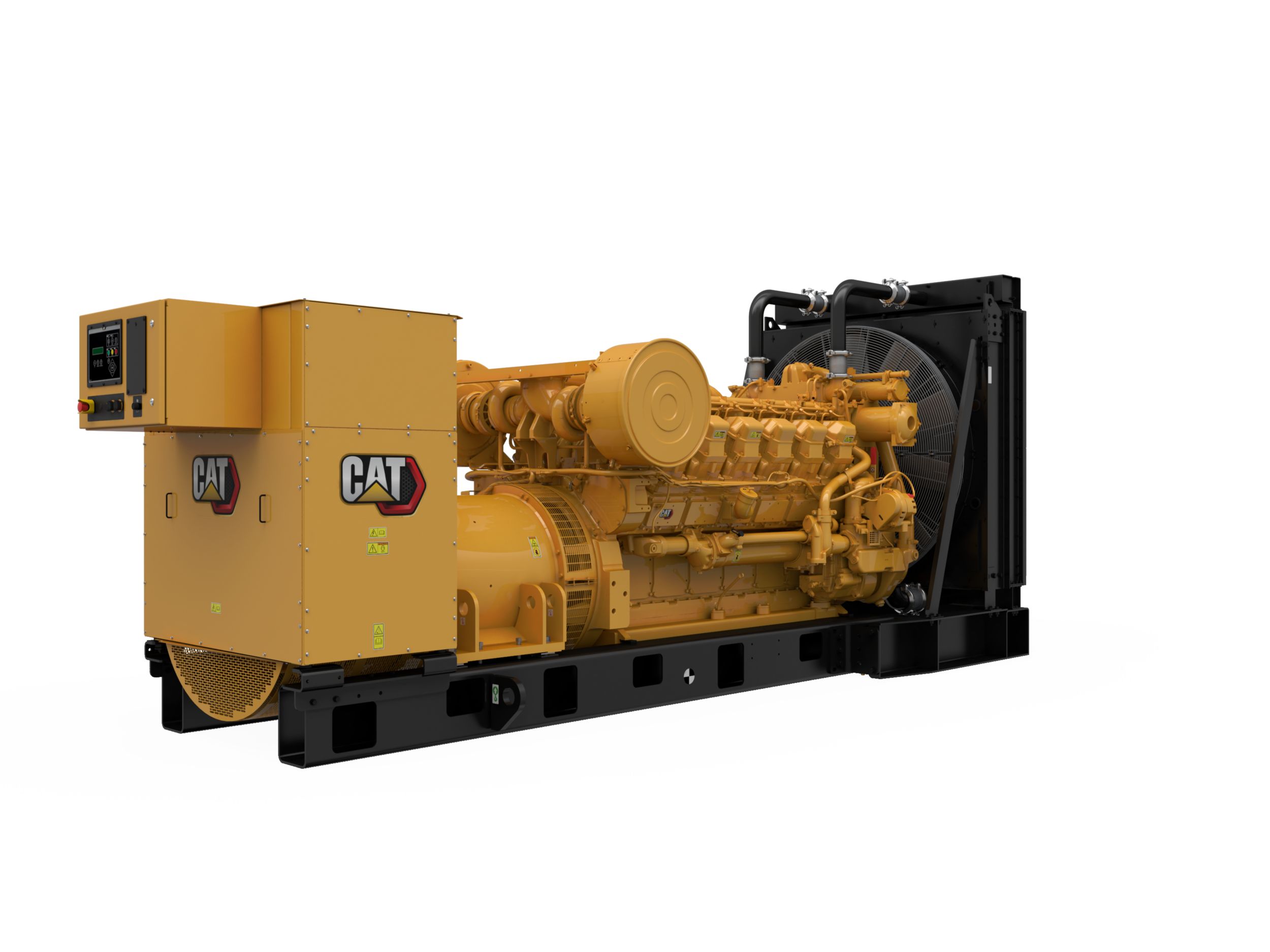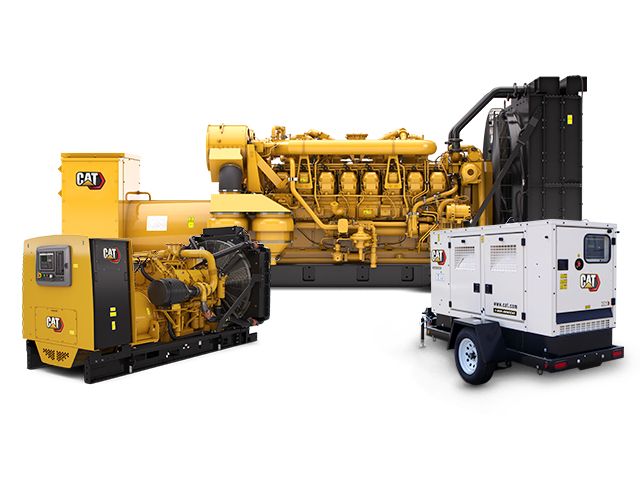

Sign In
Welcome! Sign In to personalize your Cat.com experience
If you already have an existing account with another Cat App, you can use the same account to sign in here
Register Now
One Account. All of Cat.
Your Caterpillar account is the single account you use to log in to select services and applications we offer. Shop for parts and machines online, manage your fleet, go mobile, and more.
Account Information
Site Settings
Security
St. Luke’s Hospital Maintains Critical Power with Cat® Backup Generators
Customer: UnityPoint Health-St. Luke’s Hospital
Location: Cedar Rapids, Iowa
Customer Business Issue: Standby power
Solution: 3512 diesel generator sets (3)
Cat® Dealer: Altorfer Power Systems






POWER NEED
On August 10, 2020, a powerful derecho hit the City of Cedar Rapids, Iowa, packing wind speeds of 140 mph and causing widespread devastation throughout the community. The unprecedented straight-line windstorm lasted for approximately 45 minutes and damaged every corner of the 75 square-mile city—causing an estimated $60 million in damage.
The derecho tore through Iowa’s second-largest city just 12 years after a devastating flood caused $11.3 million in damage to Cedar Rapids in 2008.
Up to 100,000 trees were damaged or destroyed—representing more than 65 percent of the city’s tree canopy. Decades-old trees that once lined streets and yards were sheared off or completely uprooted, making many city streets impassable.
Homes and businesses throughout the city were devastated. Alliant Energy and Linn County REC reported all Cedar Rapids customers were without power immediately after the storm. Traffic signals, roadway signage, and other critical services were down. The city’s water and wastewater treatment plants, police and fire stations, and local hospitals relied on generator power to maintain operations until grid power could be restored.
The city’s largest medical facility, UnityPoint Health-St. Luke’s Hospital, sustained significant roof, window, and water damage. Additionally, UnityPoint Health fiber optic lines were destroyed by the storm, and significant debris and downed trees littered the hospital grounds.
When grid power was lost, St. Luke’s operated solely on backup generator power for two days. Because the Urgent Cares and Family Medicine Clinics were closed in the area, the St. Luke’s Hospital ER treated a much higher volume of patients.
SOLUTION
Six months prior to the storm, St. Luke’s commissioned a new 4.5 MW standby power plant consisting of three Cat® 3512 diesel generator sets.
“From the get-go during the early design phase, there was no question that we wanted to go with Cat generators,” said plant operations manager B.J. Schreckengast. “Based on our previous experience running Cat gensets, we were all in agreement—there was really no consideration given to adding another brand of generator.”
St. Luke’s has 16 operating rooms that are fully utilized from 12 to 16 hours daily. Procedures range from open heart surgery to hip replacements.
“So, it’s very critical that we maintain that emergency power should our normal power source fail as it did during the derecho,” Schreckengast said. “These critical areas of the hospital need to be up and running, and there can’t be any doubt that the generator sets will fire up immediately and run continuously until grid power is restored. Our expectation is that they will be ready to run when needed, and we don’t have to worry about it. And that was certainly the case last summer when the derecho hit and grid power was suddenly gone.”
St. Luke’s has 26 automatic transfer switches throughout the hospital that are fed from the generator plant. Two of them are dedicated to the chiller plant, which runs two 1,200-ton units.
“So, it gives us cooling capability during the summer months that we previously did not have with our old generator plant,” Schreckengast said.
Less than six months after the new generator plant was commissioned, the derecho struck Cedar Rapids. Schreckengast knew bad weather was approaching, so he had the facilities staff start the generators in advance of the storm’s arrival—a practice known as storm running.
“We were in the power room when it hit, and it hit hard,” Schreckengast recalled. “It ripped off a good portion of the roof on the sixth floor and broke several windows. Trees were down and roads were completely blocked around the hospital campus. It seemed like it went on forever. When you think of a tornado in the Midwest, it comes and goes pretty fast. But this lasted for a much longer time.”
RESULTS
St. Luke’s lost both utility feeds to the hospital and ran on generator power for 38 hours until temporary utility power was restored. Schreckengast kept the generators running in case more intermittent outages occurred. The goal was to maintain normalcy for staff who were treating patients injured during the storm.
“These Cat generators had maybe 50 hours on them before the storm,” Schreckngast said. “And they were asked to do their job, and they performed perfectly.”
Regular maintenance on the gensets is conducted by facilities staff, while Cat dealer Altorfer Power Systems handles preventive maintenance on a periodic basis as part of a Customer Value Agreement (CVA).
“We have standards as a hospital that we have to follow, and some of those might be more stringent than what the manufacturer recommends,” Schreckengast says. “So we work with Altorfer to make sure that we’re meeting both our Joint Commission requirements from Medicare and Medicaid, but also that we follow Caterpillar’s recommended maintenance procedures.”
Whenever he has a question or a service need, Schreckengast says an Altorfer technician is quick to respond.
“Altorfer is great, I have multiple ways to contact them. Whenever we’ve called for service, it seems like by the time I hang up my phone and make my way up here to the plant, they’re already pulling up outside and heading up here to take a look at any issue we might have.
“And they keep me informed about any new service recommendations,” he continues. “With all big equipment that you want to maintain, there’s obviously some things you always want to look out for. They keep me apprised of things we need to do to keep the generators in peak operating condition. In a word, the service they provide is outstanding.”
The new power plant building, which is located next to the helipad off of the hospital’s west entrance, won an award from Master Builders of Iowa for its overall design and integration into the existing facility. The structure is designed to withstand an EF3 tornado.
The seismically certified generator sets are mounted on a series of shock absorbing coil springs to minimize vibration. This is helpful in that magnetic resonance imaging (MRI) machines are located in an adjacent building, Schreckengast says.
“Early on in the design phase, there were concerns about how vibrations would affect our MRI machines with having these generators nearby,” he says. “But we’ve had zero issues with that. We’ve had no complaints from the MRI staff, even when the generators run.”
Currently, the generators need only run at 40 percent of their capacity to supply power to the hospital in the event of an outage. The third genset is required for redundancy should one of the other two gensets encounter a problem. It is also meant to provide additional power for future expansion of the hospital.
“So, we do have a lot of room for future expansion on the campus with these Cat generators,” Schreckengast says. “We expect them to last for 30 years. Hopefully, they will still be here long after I retire.
